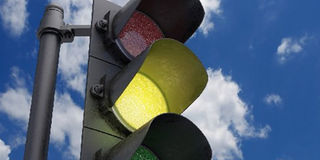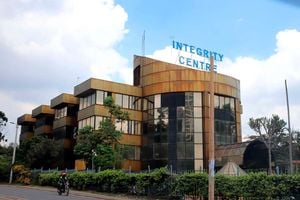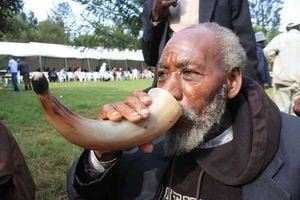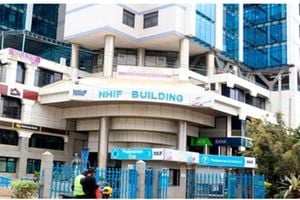
Traffic lights. Traffic incidents can be reduced in a number ways, which do not include spending billions on gizmos.
When did the rain start beating us? That is the million-dollar question by Kenyans on X (KoX). My guess is that it started to beat us when the upgrade of Jomo Kenyatta International Airport (JKIA) came without consideration for the users of the airport.
Rain has exposed the inefficient way government institutions are run. Government projects are becoming increasingly impractical or inhabitable. That ranges from the open JKIA airport car park to roads and now offices for MPs. The design faults that keep cropping up in government infrastructure shows the shoddy work that goes into them in a rush for kickbacks.
The Nairobi Expressway and Makupa Causeway, in Mombasa, appear to be rushed jobs. They have flooded in the rain, something that should have been factored in during the design and construction phases to stop the mess—but alas!
JKIA is the face of Kenya. The entry point to the country. Like any front door, it should be sleek, beautiful, practical and welcoming. Above all, it should keep the users dry and safe. The walk from and to the public car park and taxi rank is exposed to the elements. When it rains and during hot sunny weather, there is nowhere to hide.
It is worse having to drag large suitcases in pouring rain looking for a taxi or your car in the maze that is the car park. What’s more, the zebra crossings are not as safe as they should be for pedestrians due to the indiscipline of drivers. The walkways should have been covered to keep pedestrians and passengers dry.
The laissez-faire attitude towards construction of public buildings and infrastructure clearly also contributes to the many road crashes. The increase in the number of road crashes has largely been blamed on reckless drivers and corrupt police. The government is yet to take responsibility for the carnage.
The finger should be pointing at the government for its failure to construct enough roads and do so in a standard that would keep motorists and pedestrians safe. Instead of looking at a holistic approach to the problem, the government comes up with piecemeal solutions, such as speed cameras. These have been installed countless times but did not bear fruit. Millions of shillings was spent on them in the last government and I bet none works.
Traffic lights are an important component of calming down the traffic and contribute to safe driving. Like the South African comedian says, traffic lights in Africa appear to be there “just to add to the ambience”. I guess zebra crossings are thought to be useful to zebras and not pedestrians.
Poor training
Such thinking highlights how poor our training is when it comes to safe driving. Even government officials do not know the meaning of safe driving as they have perfected the art of driving fast against the traffic to go nowhere, consequently creating gridlocks where there should be none.
Traffic incidents can be reduced in a number ways, which do not include spending billions on gizmos, such as speed cameras, for kickbacks. What’s the point if you can bribe a police officer, judge and magistrate? The first solution, therefore, is investment in our justice system, including the police service, to enable the officers to focus on the work of keeping our roads safer and not chase bribes.
Secondly, the signage needs to be improved on all the roads, tarmacked or otherwise, to help drivers to navigate them safely. They do not need to be made of metal beloved of vandals. There are cheaper lower- value materials such as plastic—or even post them on trees or concrete pillars. Build ‘Stop’ and ‘Give Way’ signs with automatic bollards or barriers to stop speeding drivers at critical junctions if need be.
Markings are almost non-existent on our roads; this can easily lead to collision and, hence, needs improving. Road bumps need to come with controlled speed in residential and town areas. We seem to drive at the same speed everywhere—that is, fast. Varied speed slows down traffic and can improve awareness levels.
Matatus and boda boda not only need to be culled but even replaced by a more efficient public transport system. They are not only a nuisance but also contribute to criminality. The boda boda industry has gone rogue; if not checked, it will contribute to decline in law and order.
Most of the riders are untrained and unregulated; that’s why they drive as they please, in zig-zag fashion. They have become a danger to pedestrians, motorists and other road users. They need to be out of major cities like the capital, Nairobi, if we want order and reduce congestion.
Most of the roads in Nairobi do not have safe crossing areas for pedestrians either. People don’t have to be pushed to use footbridges, which are mostly in the Eastlands area. Busy roads like Kenyatta, Moi and Haile Selassie avenues, and University and Waiyaki ways, should have several crossing points for pedestrians.
A lot of changes are needed to end the road crashes—not just speed cameras.
- Ms Guyo is a legal researcher. [email protected]. @kdiguyo










